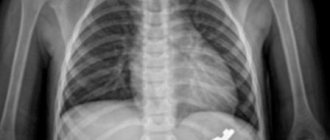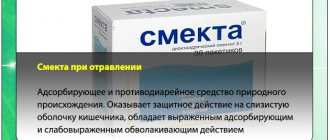In addition to various injuries in dogs, poisoning also often occurs. It is almost impossible to avoid this. Even the most disciplined animal at least once in its life succumbs to temptation and picks up some rubbish on the street. In addition, sometimes the owner gives the pet poor quality food or a spoiled piece of meat. And finally, through thoughtlessness, an animal can eat an inedible object (for example, a plastic bag or a candy wrapper).
In such cases, the question arises: how to induce vomiting in a dog? It is this topic that is discussed in this material.
When is artificial vomiting needed?
If a small object without sharp corners is swallowed, it is better not to disturb your pet. The coin or designer piece will come out of the intestines on its own within 24 hours. Emetic assistance is necessary when eating the following toxic substances:
- medicine from the owner's medicine cabinet;
- chalk for cockroaches;
- rodent control products;
- toxic building materials;
- antifreeze.
Artificial vomiting will only worsen the pet’s condition if he has convulsions or blacks out. Sharp objects and acids when leaving the oral cavity will increase damage to the mucous tissue. Vomiting is of no use for non-food poisoning (through the skin or lungs), or two hours after ingesting a toxic object. In these cases, it is necessary to urgently take the dog to the veterinarian.
A little about vomiting
Quite often, dogs regurgitate the contents of their stomach on their own. Provided that the overall health of the pet remains satisfactory, there is no need to worry. The presence of bile in vomit usually indicates that the dog is hungry. This happens if, for example, she refused food the night before. A bowl of food solves the problem. However, if food is still rejected after this, you need to go to the doctor.
In addition, a dog often vomits if it has swallowed a bone or a large fragment of it, which is not able to pass further through the intestines and interferes with the stomach. There is no need to worry here either.
How to trigger a reflex
There are several ways to trigger a gag reflex in a dog. For this purpose, medications and folk remedies are used. In any case, it is necessary to take into account the age and size of the pet. That is, puppies and toy dogs require a minimum dosage of substances to artificially empty the stomach.
Salt
Table salt crystals will help to quickly induce vomiting in your dog. Press on your pet's jaw so that it opens its mouth, and pour half a teaspoon of the product onto the root of its tongue so that it does not get into the throat.
Sharp irritation of taste buds causes cramps in the digestive tract.
If such actions do not lead to vomiting, make a strong saline solution in the following concentration:
- 2 teaspoons of salt per 500 ml of warm water - for puppies and small dogs;
- 4 teaspoons of salt per 500 ml of water - for dogs weighing up to 30 kg;
- 2 tablespoons of salt per 500 ml of water - for pets heavier than 30 kg.
Signs of animal intoxication
Intoxication in a dog
There are several obvious signs that will tell you that not everything is all right with the animal:
- The dog suddenly becomes apathetic, drowsy, and moves little.
- Breathing is shallow and frequent.
- The animal whines in pain and trembles.
- Increased salivation may occur.
- Diarrhea or vomiting often occurs.
- Appetite disappears, but thirst increases.
- Convulsions may occur.
- In some cases, changes in urine are observed: frequent urination, brown urine.
Medicines
Veterinary and general pharmacies sell medications to induce vomiting. They have a pronounced effect and require precise dosage. Therefore, before use, the owner must weigh the dog, study the instructions, and make sure that the medicine is not contraindicated for the pet.
Ipecac syrup
The second name of this medicine is emetic root. When it enters the body, it causes the urge to empty the stomach.
Puppies are given 1 teaspoon of the product, adult dogs - 1 teaspoon per 5 kg of weight. It is important to ensure that your pet drinks the entire portion in one sip.
Precautions for pet poisoning
When inducing vomiting in your pet artificially, you must remember the contraindications:
- If the animal is already vomiting. In this case, there is a possibility that you will not help, but will only worsen the dog’s condition.
- If the animal is unconscious or semi-conscious, there are convulsions or convulsions. The swallowing process is impaired and the dog may choke on vomit.
The poison entered the body not through the gastrointestinal tract, but through the skin or respiratory system.
- If the animal is poisoned by acid or alkali. In this case, repeated injury to the mucous membrane of the pharynx and esophagus is possible.
- A sharp object entering the esophagus during vomiting can cause repeated injury to the gastrointestinal tract.
- Pregnancy is also a contraindication for inducing vomiting. It is necessary to immediately take the animal to the clinic without using any first aid measures.
Further actions
After the stomach has emptied, take your dog to the veterinarian. Cover it with a warm blanket, since after poisoning the animal’s body temperature decreases. Also, take with you the label or instructions for the substance that your pet ingested.
After the examination, the doctor prescribes absorbents (Polysorb, Smecta, Enterosgel). For a speedy recovery, the dog must adhere to a diet of easily digestible foods for 7-10 days. Give your pet plenty of water and limit his physical activity.
When is stomach cleansing needed?
At the slightest suspicion of danger, you should not hesitate to rinse the dog’s stomach. Poisonings themselves are divided into acute and sluggish. But in all cases, at least an hour will pass before the stomach can absorb the poison.
You will have to call a doctor in any case, since there are many toxic substances that can cause irreparable harm, even if the washing is done on time. Only an antidote can neutralize them.
The following symptoms indicate poisoning:
- a sharp deterioration in health for no apparent reason;
- lethargy;
- weakness;
- excessive salivation;
- noticeable pallor of the mucous membranes;
- refusal of food and water;
- diarrhea;
- pain on palpation of the abdomen;
- unusual smell from the mouth;
- decrease in temperature;
- hind limb weakness;
- loss of consciousness.
What causes a dog to vomit naturally?
There are cases when it is not necessary to induce vomiting, the animal vomits itself.
What else can cause vomiting in a pet, besides poisoning?
- infectious and parasitic diseases;
- endocrine disorders;
- high blood pressure;
- side effects from taking certain medications;
- the presence of a foreign body in the esophagus or stomach;
- motion sickness in transport.
Diseases accompanied by vomiting
- leukemia;
- hypertension;
- sun/heatstroke;
- diabetes mellitus (with hypoglycemia - a sharp drop in blood sugar);
- worms, etc.
Which medications cause vomiting in animals?
Many medications have vomiting as a side effect. These are mainly antibiotics, macrolides, sulfonamides and tetracyclines. These drugs most often affect the condition of the gastrointestinal tract. But you need to understand that medications that cause vomiting as a side effect are not used to purposefully induce vomiting if necessary.
What to do after
If you managed to clear the animal’s stomach of a dangerous substance or object, then you don’t need to stop there. It is imperative to consult a veterinarian so that he can assess the animal’s condition and find out whether anything threatens its health. You should not take any adsorbents indicated for toxic poisoning before consulting a specialist. If you know exactly what poisoned your dog, then take a small amount of this substance with you as a sample.
In what cases should the gag reflex not be stimulated?
It is strictly forbidden to do this if a foreign object is stuck in the animal’s throat. Otherwise, vomit can completely block the airways, which can be fatal.
This procedure should not be carried out if your pet has swallowed some kind of chemical that burns the mucous membrane. In this case, you can cause irreparable harm to him. This is explained by the fact that the substance coming out can further damage the dog’s insides.
When is “emetic” help needed?
In dogs, it is imperative to induce vomiting in the following cases:
- Rodenticide was swallowed - a substance that is included in most baits against harmful rodents (rats, mice). When absorbed in cats, it provokes blood clotting disorders.
- Ingestion of arsenic, which is most often found in garden weed control products. You can only guess about poisoning if you see with your own eyes that your pet has eaten enough of it, because... death from poisoning occurs without any symptoms.
- The dog has eaten any pills from the human medicine cabinet, especially if they are painkillers or non-steroidal anti-inflammatory drugs (aspirin or paracetamol).
- Antifreeze has been absorbed. This substance very quickly provokes the development of kidney failure in dogs - vomiting must be induced immediately!
- A foreign object (not sharp!) got into the throat.
Veterinarian advice
Is it possible to limit yourself to home measures in case of serious signs of intoxication?
No, you cannot rely on self-treatment. The animal (at the first symptoms of poisoning) must be taken to the veterinarian as quickly as possible so that he can provide qualified assistance. The exceptions include food poisoning, accompanied by rare and short-term vomiting/diarrhea, when you can get by with adsorbents and a strict starvation diet.
What diet is recommended after poisoning?
The dog is not fed anything for a day (or a little more), but is given a lot of water, making sure that there is no vomiting. After the dog’s condition returns to normal, he is limited in food, giving small portions when appetite appears. Meat, preferably boiled, begins to be introduced in the form of minced meat, gradually moving into slices and larger pieces. Anything that significantly burdens the liver and kidneys is strictly prohibited - fish, pickles, smoked foods, fried and fatty foods.
Why do you need to induce vomiting?
Help will be needed if the gag reflexes do not start on their own. In this case, you have 2 hours - later your efforts will be pointless, since the toxins will have already entered the bloodstream, and veterinarian intervention will be required.
Types of intoxication
All poisonings are divided into 2 groups - non-food and food.
The first include:
- bites of poisonous animals;
- poisoning with anti-rodent agents;
- drug overdose;
- poisoning from household chemicals;
- inhalation of carbon monoxide/gasoline vapors.
Quick help is the key to salvation
If you notice a foreign object that your dog has swallowed, first decide whether to induce vomiting. When the foreign body is not dangerous and not large in size, it is able to leave the pet’s body naturally. In this case, inducing vomiting will be unnecessary. But if you see that vomiting is necessary, begin the procedure of inducing vomiting as soon as possible.
Important! A quick response to induce vomiting can save your dog's life.
An immediate response on your part is very important, as any delay could cost the dog his life. It is worth noting that one of the most common causes of death in pets is poisoning. The faster you induce vomiting, the sooner your pet’s body will get rid of the harmful effects of the poison. After the toxic substance enters the stomach, it begins to be absorbed into the blood. You need to act quickly to reduce the amount and time of absorption of toxins and to prevent them from entering the intestines.
The following symptoms may indicate poisoning in a beloved animal:
- profuse salivation,
- apathy,
- convulsions,
- diarrhea.
It's a good idea to call a veterinarian. But by the time he gets to your dog, it may be too late. Therefore, do not waste time and proceed with the necessary procedures to induce vomiting in a dog. The ideal option is if the veterinarian can consult you by phone before this.
Main dog nutrition problems
Most often, it happens that the owner notices the nutrition problem only the next day .
The experience of many breeders shows that almost anything can affect the condition of a dog’s stomach. Often poisoning was caused by even a banal change of food. Out of six dogs, one will almost always vomit from the new food. But fortunately in this case the reason is known and does not cause concern. Much less often there are cases of deterioration in the health of animals for no apparent reason. And the first thought that comes to the owner’s mind is “she ate something wrong.” And the dog owner’s own experience shows that in this case, the right solution would be gastric lavage . The measure is extreme in many ways, but very effective. And in general, provoking vomiting in an animal is a very dubious activity, unless the owner knows what exactly was the wrong food that the dog ate; there is no time to hesitate.











